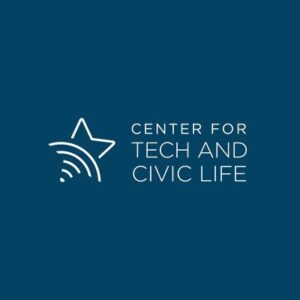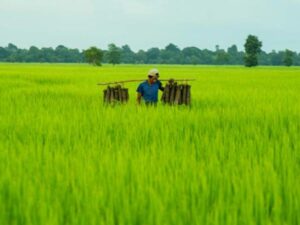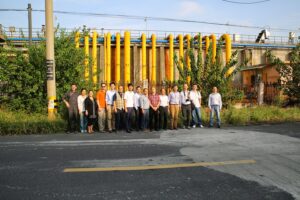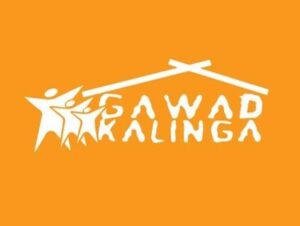Water & Sanitation for the Urban Poor works to transform cities to increase access to safe water and sanitation. The organization works alongside local providers, enabling them to develop services, build infrastructure, and attract funding so that they can reach low-income communities.
Ed Mitchell of Water & Sanitation for the Urban Poor spoke with January 25, 2024. Click here to read the full conversation with insights highlighted.
Alec Saelens: Could you please introduce yourself and the work that you are doing, describing the problem that you’re addressing and how you’re responding to it?
Ed Mitchell: My name is Ed Mitchell and I’m the chief executive of the not-for-profit company Water and Sanitation for the Urban Poor, WSUP for short, and we’ve been going since 2015. We work across several countries in Africa and Asia, and our purpose is to help low-income communities in cities access water and sanitation in a sustainable way.
Alec Saelens: Who are the different stakeholders? Who benefits from your work and how do they benefit?
Ed Mitchell: We’ve reached almost 42 million people over our nearly 20 years in operation. We believe, and this is backed up by our successes in the field, that in order to provide sustainable services, you’ve got to not just lay pipes and supply taps and toilets, but you’ve got to strengthen the system that supports that infrastructure. Our focus is very much on working with whoever the mandated authority is, the utility, the city authority, the local government, whoever, to work with them to ensure that they can better reach their citizens that live in low income communities. Our target audience is people living in what you might sometimes call slums or informal settlements. We do that in partnership with local governments, local authorities, and local municipalities.
If you think about the context in the developing world, in the global south, urbanization is a huge thing. Millions of millions of people each year are moving from rural areas to cities because of the hope of better economic opportunities. Even in the best run, most effective cities, authorities are struggling to keep up with that growth. Day by day, month by month, new communities are springing up. Of course getting the infrastructure and the services to those communities is a real challenge, particularly when you think about the special characteristics of those communities. For example, they might be being paid in cash on a daily basis, there aren’t necessarily bank accounts. They may not have land rights or tenure, they may be living in informal settlements, et cetera. What we offer is working with those authorities to find ways of supporting the people that they already want to support, but specifically in urban environments around water sanitation and hygiene education.
Alec Saelens: Could you give me a description of a successful project or way in which you have partnered with a utility company or a local municipality or authority (local, regional, or national) in order to successfully implement a new system that has benefited a large number of people?
Ed Mitchell: Absolutely. I’ll give you a couple if that’s okay. One at the system change level and one at the practical engineering level. Kenya’s been a country that we’ve been operating in for the longest time. We have long-term programs in seven countries. We also have an advisor, a consultancy arm called WSUP Advisory that works in something like a further 20 countries. Our longest relationships are in those seven core countries. One of the first of those was Kenya. Kenya has the local government responsibility divided up, I think there are some 60 or 70 counties, but they have a strong system of regulation of the water and sanitation space. We’ve worked with individual municipalities and towns and cities, but we’ve also worked with the national regulator because the influence we’ve had there impacts across all of the counties they operate in. A really specific example, two examples. One is that in Nairobi, the capital of Kenya, we help support Nairobi Water to set up a low income unit. As I said a moment ago, how you serve poor communities is generally not the same as how you serve affluent communities because of all the issues of engagement, IT sophistication, banking, et cetera. We supported Nairobi Water in setting up a low income unit, which started off with us supporting just two individuals within that unit. It now has the status of a whole county, a whole district within Nairobi Water structures and has been really influential in enabling them to reach out to the underserved poor areas. Nairobi’s a big place and they have some very large underserved areas, but it doesn’t help the other municipalities in Nairobi.
We work with the regulator and their regulator works a bit like the UK regulatory system or many other countries by comparative regulations. They set a number of key performance indicators that all utilities have to report against, and they move the whole sector forward by ranking utilities based on performance, by publishing leak tables effectively and by providing the basic standards they’ve got to operate to and providing health and guidance as well. They previously had nine key performance indicators and we helped them introduce a 10th, which is specifically focused on how well the utilities are supporting their low income communities. Before that, they had no particular metric that focused on low income communities. Now every single utility in Kenya is judged against this metric, it’s called KPI 10. That’s had an enormous impact in terms of focusing management time and investment and everything else, and has significantly moved forward provision in low income areas. We’re building on that now with them to look at whether they could do the same for sanitation provision in low income communities, again with a nationwide impact. We try to operate at the local level, but also at the national level and through various international groupings, and, through our research and dissemination of our findings, even at the continental or international level.
Alec Saelens: Beautiful. That was at a systems level example?
Ed Mitchell: Yes. A more technical engineering type example would be perhaps in Madagascar. The capital of Madagascar, Antananarivo, is a very lovely, interesting city that’s built on a number of hills. It’s very hilly. Now, it’s quite unusual for African capital cities in that the low-income communities tend to be interwoven. There aren’t large low-income areas or informal settlements that tend to be much more integrated. So you get wealthier people and poorer people living alongside each other. One of the big challenges in Tana, as it’s shortened to, is because of the topography, you have to pump water at very high pressure to make sure it reaches the people who live on the top of the hills. The problem with pumping water at high pressure is that it leaks, it makes pipes much more leaky, it causes them to fracture, et cetera. We’ve been working with the national regulator and with the city authorities in Tana to put in place a pressure management system. We’ve helped procure and fit valves that regulate the pressure in different parts of the system. These are smart valves, they are connected so that the operators can see on a screen exactly where the pressure fluctuations are and how the pressure is being moderated so that the people at the top of the hills can still get their service, but it’s not blowing the pipes in the low lying areas.
That’s a very technical solution to a specific problem, but it’s much bigger than that because in Antananarivo there is a general shortage of water. The utility there struggles to extend its network into new areas and peri-urban growth areas because there simply isn’t enough water to supply. By pressure management and what’s called non-revenue water management, that we manage, we help them save a huge amount of their water, which then frees it up for them or us to do network extensions into other areas. It is a kind of technical solution to a specific problem, but it has a much wider benefit in that it allows the utility to extend its services into currently unserved areas.
Alec Saelens: That’s wonderful. That’s such a fascinating example. Thanks for sharing that. You mentioned that part of your work is sharing knowledge about what you have done, what you’ve accomplished in various different countries with the international community, in order presumably, for those solutions that you’ve created to be replicated. Could you tell us a little bit more about that work that you’re doing?
Ed Mitchell: Absolutely. You’ve hit the nail on the head there that one of WSUP’s founding ethoses was that we wanted to share what we learned as we learned it as widely as possible, because in the context of some 2.2 billion people lacking service for water and even more around 3 billion for sanitation according to the UN, however big WSUP gets and however successful it gets, we’re only going to make a relatively small contribution to that problem. We’ve always tried to make available our learning for anybody who wants to use it, learn from it, replicate it, whatever. We’ve been pretty successful at that. It’s funny, it’s a difficult area to fundraise for on the whole, but we have been successful in doing that and we’ve got some very interesting current projects going on that I might just touch on a couple of them.
We are doing a project for the World Bank establishing some principles for universal access to water. Taking all that we’ve learned across nearly 20 years and 20 countries and those 42 million people that we’ve helped, we’ve consolidated that and synthesized it into some core principles and some supporting principles that the World Bank have asked us to do and that they will then use to inform their own lending and the design of their program. Of course we’ll publicize that, and we haven’t finished that project yet, but we already shared with them at the World Water Conference in Stockholm last year, for instance, the initial set of those principles to a wide international audience. That’s one example.
We also work through regional bodies. There is an interesting organization called Eastern and Southern Africa Water and Sanitation (ESAWAS), which is the grouping of water and sanitation regulators for Eastern and Southern Africa. In fact they’re expanding to cover the whole of Africa. We’ve produced two or three research reports for them. One, looking at what the evidence is about how countries set up regulation of water and sanitation with best effect for serving the poor. This was back funded by Gates Foundation, I think through UNICEF from memory. What it showed was that what appears to be the most effective form of regulation is where you have an independence of your regulator. Kenya would be an example of that. Other countries, either the regulation is done as an arm of the ministry or just a little semi-independent arm of the water ministry or just a small department within the ministry.
What we were able to show is that there’s clear evidence that an independent regulator seems to drive better performance in terms of water and sanitation provision to low income communities in urban areas. Taking that one step further, we’re also currently, and again, we’ve just started sharing the results on this, we’re currently [producing] a root map or roadmap for effective regulation. This is funded by WHO, the World Health Organization. We’ve taken examples from, there’s a very effective regulator in Zambia for instance, we’ve built on the model that they’ve used. We’ve looked at countries across the world, not just in Africa, not just in Asia, but also in South America and other places. And again, kind of synthesized all that learning so that if somebody is looking to set up an independent regulator, we’ve set out 10 or so clear steps about what the components of that might be. I think that will be really powerful as well. Then we do much more technical and more specific interest stuff. We write a lot of practice notes and we evaluate all our projects every three or so years, and we write that up. We try to share whatever we can in the hope that somebody else or lots of other people will pick it up and benefit from it.
Alec Saelens: That’s wonderful. I feel like I’ve perhaps got a bit of a sense or could anticipate what the answer might be to this question, but how do you measure your success and what is the evidence that you’re making progress that you try to capture?
Ed Mitchell: Our main indicators that we track our progress against are around beneficiaries, which is a horrible word for people. People whose lives we’ve made a real difference to. We track those beneficiaries in terms of overall numbers, but also those that we’ve enabled sanitation provision for, those that we’ve enabled water provision for, and also those that we’ve given hygiene training and promotion to. We also look at the amount of international finance we’ve managed to influence to be deployed onto water and sanitation because all the statistics show that the amount of international finance that is spent on water and sanitation is relatively small in comparison with the scale of the problem of reaching the sustainable development goals. We track how much money we’ve been able to influence and direct. This is now money, this is World Bank’s money or European Bank of Reconstruction Development or funders like that, African Development Bank. We have a number of sub-indicators and we are just going through a process. We tend to operate around a five-year cycle of business planning, and we’re preparing for our next five year cycle, which will start next year. We’re looking at some wider metrics and those will incorporate the amount of water saved because of that example I’ve just given you in Madagascar, how much water we help people save is really important in terms of making it available to other people.
Our contribution to making water and sanitation provision resilient to climate change is becoming an increasingly important part of our work and some others we’re looking at as well around the gender balance of who benefits from water and sanitation provision and things like that. We measure that country by country, but also we total it up for what the whole organization manages to achieve.
Alec Saelens: What are the key challenges that you face? I imagine raising funds to support your work is the primary one, but bypassing that one, which is pretty common, what are the other challenges that you find hardest to solve and how have you tried to tackle them?
Ed Mitchell: Yeah, you’re absolutely right. Raising funds is always an issue. Particularly supporting the development of growth of an organization like ours rather than just paying for projects is the most challenging subset of fundraising. Beyond that, I think the world is littered unfortunately with extremely well-meaning projects where people have laid pipes or provided toilets that if you go back, if you’re lucky three years later, but if you’re unlucky six months later and you turn the tap and nothing comes out of it. Actually demonstrating and making the case that it isn’t just about laying the pipes, but it is also about strengthening and enabling the system that means that the provision is there into the future is actually quite a challenge. Some funders take a little bit of time to be persuaded of that. It is a less immediately tangible return on their investment, I guess. But it’s absolutely essential and we can show that everywhere that we work.
The other thing about that though is it means we are trying to influence a lot of people in positions of power and influence in countries. It’s not an overnight thing. If you’re going to do this properly and make sure that it is truly sustainable, it usually takes a little bit longer, which therefore also costs a little bit more. I think the results do speak for themselves in terms of the durability of the solutions and also the kind of scale aspect. Providing a new water system for a single low-income community whilst absolutely brilliant for those residents and life changing, it doesn’t help the neighboring community unless you have also built that capacity in the utility and the regulator, which means that they also get a benefit from it as they also get service.
Alec Saelens: I really appreciate just visualizing how a water system functions and this idea that you can’t just lay the pipes and hope that the water is going to get there. You need to think about what is quite literally upstream in the infrastructure that you need to build in order to sustain it. Could you speak a little bit about what your approach is to systems level change in this particular field? How specifically are you thinking about that?
Ed Mitchell: I think the first thing to say is that being there in the country long term, we have about 120 staff globally. The vast majority of those are in the countries in which we operate, and many of them are long serving, fantastically loyal and capable members of staff. The relationships that we build are personal as well as professional. It’s Kenyans talking to Kenyans or Madagascans talking to Madagascans, not me in London trying to influence. That’s the first thing. We have codified or systematized a little bit how we do this. Every case is different and you have to be very careful to understand the local situation and not assume, but we have a framework called Utility Strengthening Framework, for instance, which lays out what we believe the many different components there are to strengthen a utility. What we do is we help a utility self-assess against that framework. From that, then they develop, not us, we of course help them with this, but they develop a set of priorities that they want to focus on.
One thing we haven’t talked about yet is the financial sustainability of these systems. And that of course is a major challenge in many, many places and is an area we focus on very keenly. Having billing systems that low income communities can engage with, but also making sure that people aren’t taking the water without paying for it. I mean, you have to have tariffs that mean that even the poorest can afford the water, but you do need to charge for water because otherwise there’s no way of recycling money into the operation and maintenance of the system. Actually the reality is for most unserved communities, of course, they are still receiving water, otherwise they wouldn’t be there. They’re buying very, very poor quality water, usually at fairly usury rates from informal sellers who are carting it around in hand carts in 25 liter, five gallon containers, and they’re usually paying through the nose for that.
A piped water supply, not only does it have massive health benefits and livelihood benefits and convenience because people aren’t spending several hours a day queuing and all the rest of it, it also costs them less. But you have to build that culture and persuade communities that they do want to pay for water because they can see that revenue being returned into maintaining the system that provides them with the service. Like I say, we have this framework called Utility Strengthening Framework, and we work with the utility on assessing all aspects. There’s about 25 different components to it, and we build a program of work with them in the areas that seem most important to them in terms of being able to provide that sustainable service.
There are lots of these frameworks and we’re not, although we did develop one of our own many years ago, there’s also a Bill & Melinda Gates Foundation funded one called CWIS, which is about sanitation, Citywide Inclusive Sanitation, it stands for, and that’s another good framework that we often work with utilities and governments on. We’ve tried to codify, but not in a way that means that we are selling a standard blueprint to people. We’ve just tried to consolidate our learning from many, many different cities and provide a framework that the utility or the authority can work through with us to help strengthen their system.
Alec Saelens: Just to drill down a little bit more in this Utility Strengthening Framework that you’ve talked about, could you say a little more about what the core components of that approach are or how that framework can be replicated from one place to another, knowing that it needs to adapt itself to local circumstances, and what makes it successful?
Ed Mitchell: We’ve used it at various different scales. Our USP, our sole focus is on urban environments, but in Africa and Asia, urban can mean mega city or it can mean fast growing small towns that were nothing more than a large village 10 years ago and now have 10, 20, 30, 40, 50,000 people in it. We’ve been able to use these frameworks across that whole range of scale, which I think says something about their utility and flexibility. There’s an initial workshop phase, which is almost like a discovery phase where we will support the senior leadership team and the utilities to look at the different components and to assess where they are currently and where they want to be. Then from that, what usually happens is you get a to-do list that’s half a mile long. You then work with the utility and the management team to prioritize that to-do list and focus on things that are really going to make a difference to their ability to serve their customers.
That prioritization is what makes it suitable for all the different circumstances because in one place there might be supply chain issues around pump components and it might be quite technical. In another place, it might be the fact that this is a small utility that is run by volunteers from the community where they have no HR systems or any of the basics of running an organization that was a community-based organization, but is rapidly becoming a utility because of the size of the number of people they’re trying to serve. It might be about water resources. It might be about helping them identify water sources and through dealing with leakage, freeing up water. It might be about water treatment technologies. It might be about sanitation. It’s really important to go in with an open mind for us just to share our varied experiences, not to tell people how they should do it. In order for them to own the outcomes, they need to feel ownership of that selection of the priority list. That’s absolutely key.
It’s all about people and relationships at the end of the day, isn’t it? Whatever scale you’re working at. At the next scale up, the level of a national body or something like that, we also have something called a sector functionality framework. We have one for water and one for sanitation. It’s a very similar process, but at the next scale up. It might help identify that you don’t have a regulator or the regulator doesn’t have the right capabilities. It might identify that the policy framework isn’t right. It might identify that the funding arrangements aren’t right or the taxation arrangements or whatever. We have different frameworks that operate at different levels, but the fundamental way that we use them is still participatory and joint and not at all about us telling other people what we think they should be doing.
Alec Saelens: Yes, participatory frameworks and approaches and engagement practices are key. Last question for you, and we’ve touched on this already, but what are the insights or teachable lessons that could be taken from your work that others could use?
Ed Mitchell: A great question and a difficult one to answer succinctly, I think. I could answer that on many different levels. I think just to give you a couple of examples, one of the challenges, a water and sanitation specific example first and then perhaps a more general comment. One of the challenges in low-income communities, slums, whatever you want to call them, is that the density of housing is usually extremely high. You don’t have a nice laid out grid with roadways between the buildings. You have narrow winding passageways. If you want to retrospectively lay sewers in a community using traditional sewer laying technology, you just can’t do it because a sewer line has to run in a straight line and then you have a manhole and then it runs in another straight line to the next manhole. Informal settlements just don’t work like that. You’d be knocking down houses left, right and center. We’ve been working, and we’ve done this particularly in Kenya on something called simplified sewer systems. I’ve seen them also in Latin America, not from us, but other people, they call them condominium sewage. What it is, it’s a much narrower bore pipe. A normal sewer pipe might be four, six inches, no more than that, six to eight inches in diameter. These are 100 mils of four inch pipes that are flexible pipes. So you don’t have to dig a very big trench and you can bend them down the narrow alleyways. And at the end of the system, you still have to connect into a traditional sewage system. But we’ve found a way of being able to lay sewer pipes and therefore provide a full, what you might call developed world sanitation solution even in slums like Kibera or wherever in Nairobi. There are very technical solutions that just require a bit of lateral thinking, which we’ve been able to develop and share with others.
I think wider than that, for me, water and sanitation underpin almost any other development objective you can think of. We install a lot of wash blocks in schools, do hygiene training, et cetera. What you see is that attendance, particularly among girls, goes up enormously if they can have privacy and decent sanitation facilities, particularly in line with their menstrual cycle. Yet the educationalists of this world don’t sometimes recognize that an essential underpinning is that water and sanitation are equal to healthcare facilities. I mean, water is life in the widest possible sense. If you look at any of those sustainable development goals that the UN has, and that we have all signed up to, and we’re fast approaching that 2030 deadline with a lot of grounds still to cover, one of my frustrations is that we are pigeon holders doing water and sanitation rather than underpinning sustainable cities, agriculture, climate change, healthcare education, et cetera.
It’s quite a challenge in persuading funders, governments, stakeholders, opinion formers that water and sanitation really is an absolutely fundamental underpinning to almost every other form of development. We continue to work at that. That’s something that I think more people need to shout about and make the case for. Then, I mean, my wider life learning, I’ve been at this in different guises for a long time, is that you’ve just got to remember it’s about people and about relationships. If you’re trying to train systems, it is about the quality of the individuals you employ and their ability to relate to and support and work with people from all sorts of walks of life, whether that is women and children in low income communities or prime ministers, presidents and government ministers. It’s essentially all about the quality of the people.
Alec Saelens: I think that’s a great place to end. This has been a really jam-packed conversation with so many great examples and higher level takeaways about systems change. Thank you.
Click here to read the full conversation with insights highlighted.
Alec Saelens is a former journalist who supports SJN and its partners track solutions journalism’s impact on society and the industry. In his former role, he researched and consulted on the connection between solutions journalism and revenue. He is co-founder of The Bristol Cable, the UK’s pioneering local media cooperative. Before SJN, he was a researcher and coach for the Membership Puzzle Project and an analyst for NewsGuard.
* This interview has been edited and condensed.
Learn about more organizations that support urban health.







